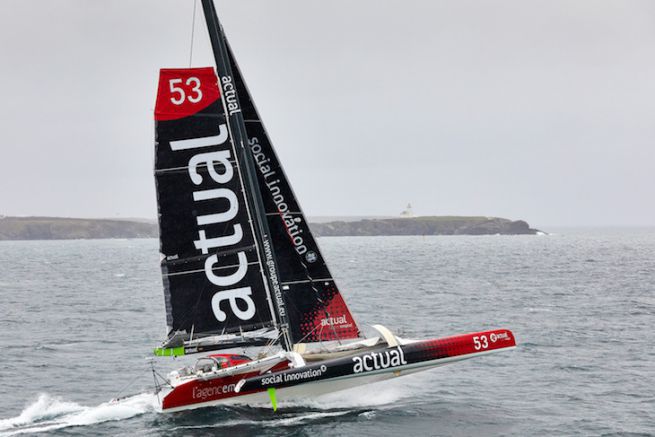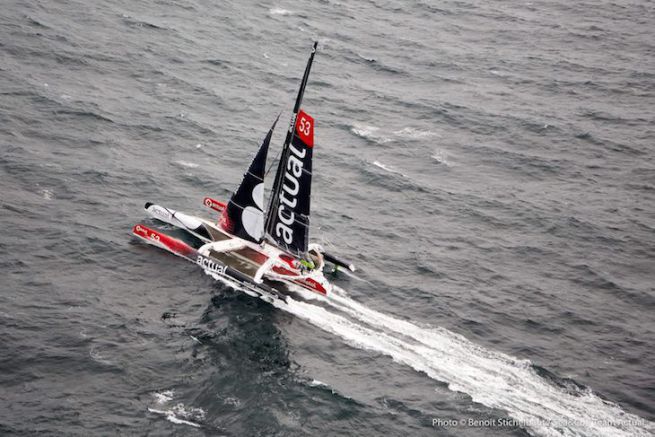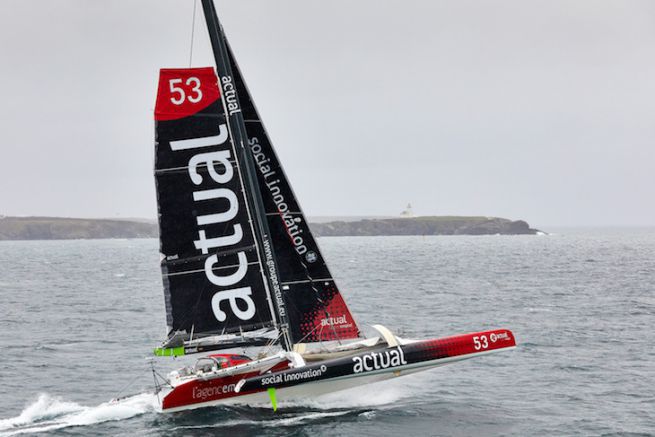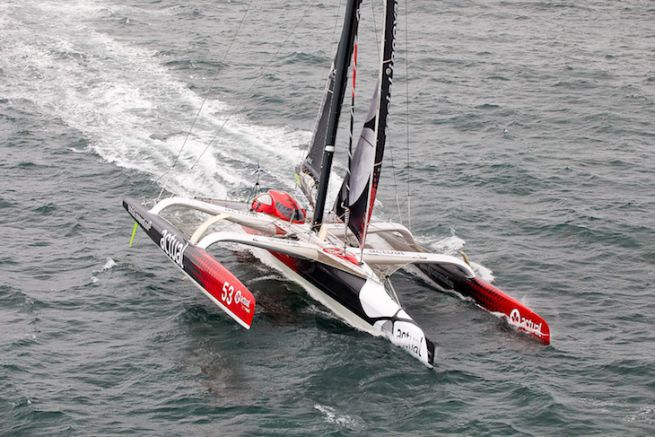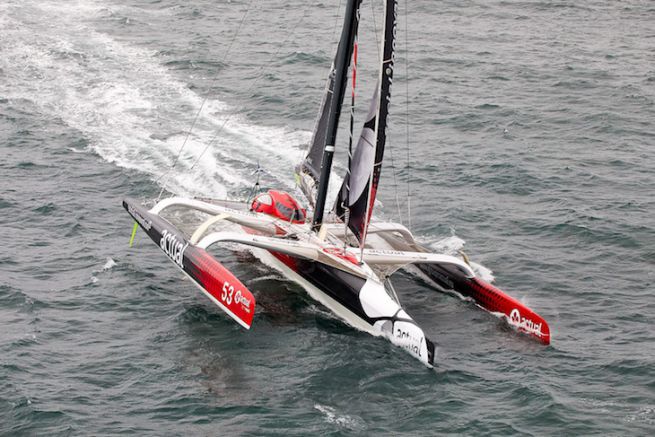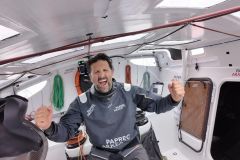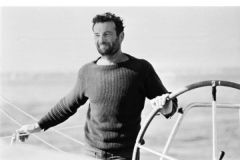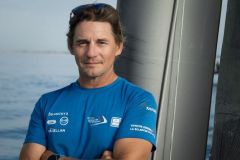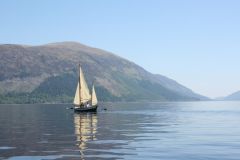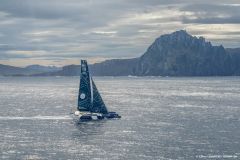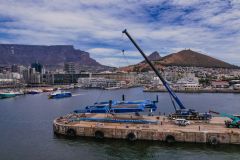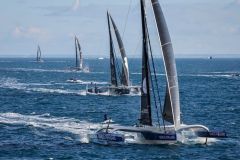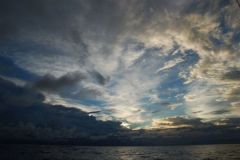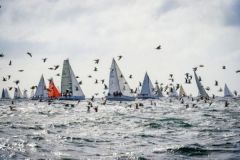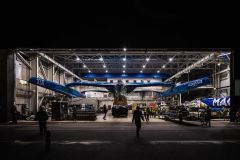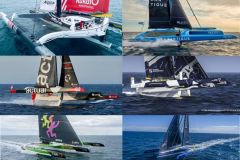Turning around to repair
Actual has embarked on an upside down world tour this Saturday, November 4, 2017 . A circumnavigation against winds and tides quickly stopped following the breakage of his mainsail wagon ...which occurred on the night of Saturday to Sunday. The skipper quickly identified the defect in a custom part (prototype), forcing him to turn back, as it was irreparable at sea. He returned to La-Trinité-sur-Mer this Tuesday 7th November at around 8am to rejoin his team and carry out repairs, before being able to set off again as quickly as possible.
"A defect in one part of the mainsail carriage blocked the circulation of the bearings, and as I had to do some heavy "shocking" in the very unstable winds of the first night, it quickly degraded these bearings, making the carriage unusable..." details the skipper.
But without a mainsail traveller - especially on a boat of this size - sailing becomes dangerous. Although the decision to turn back may seem obvious, it was not an easy one.
"It was really hard to push the bar to get home, but we had to make the decision very quickly because by the time we got this technical return I was making 25 knots towards the Canary Islands. It was either that or give up the record."
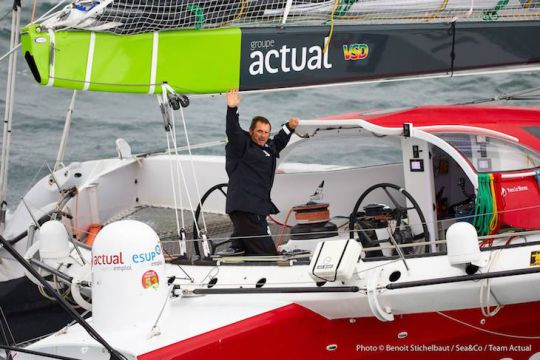
A warm-up tour of the Bay of Biscay
As soon as the boat was moored, the Actual team quickly got down to work. A few days of work should be necessary to overhaul or rebuild this faulty part, before going back to stand-by for the round the world voyage in reverse. No weather window is possible for the moment, as Yves le Blévec has studied with his router Christian Dumard. "There's no weather window until this weekend anyway." he says.
Even if he had to turn back, this tour of the Bay of Biscay served as a rather pleasant warm-up, and allowed him to make a final adjustment. " I was able to navigate in tough conditions. I got into the rhythm pretty quickly. I was able to get around the whole boat, the sails, and all the electronics are working perfectly." concludes the sailor.
Around the world upside down, what's that?
The round the world voyage in reverse consists of sailing the opposite route to the Vendée Globe. In other words, you first have to round Cape Horn, to finish with the Cape of Good Hope. Thus, instead of sailing from west to east, in the same direction as the lows (and therefore the winds and waves they generate), this upside down course is negotiated from east to west, against the winds and currents.
For this course to be validated by the WSSRC (World Speed Sailing Record Council) it is necessary to cut all the meridians and cross the Equator at least once.
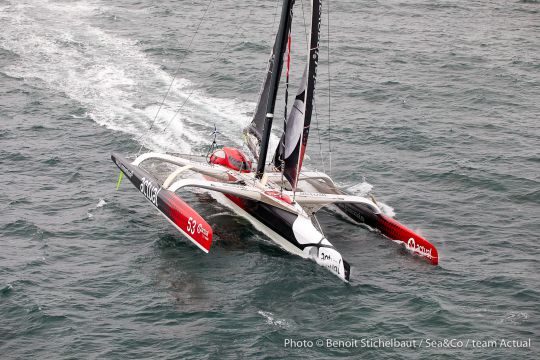
Highlights of the course
To cover the 32,000 miles, it takes between 88 and 98 days of sailing.
| Parcours | Miles | Days | Difficulties |
| Departure - Ecuador | 3,100 miles | 8 to 9 days | strong instability of the doldrums |
| Ecuador - Rio | 1,700 miles | 4 to 6 days | fast meadows, hard sea |
| Rio - Cape Horn | 2,400 miles | 6 to 9 days | instability, ice zone approach |
| Cape Horn - Peaceful trade winds | 3,500 miles | 8 to 12 days | cape Horn passage, unstable trade winds |
| Peaceful trade winds - Torres Strait | 4,500 miles | 14 to 16 days | numerous islands and atolls, instability |
| Torres Strait - Madagascar | 5,000 miles | 14 to 18 days | trade wind instability |
| Madagascar - Cape of Good Hope | 2,000 miles | 6 to 10 days | needle current, rogue waves |
| Cape of Good Hope - Ecuador | 3,500 miles | 7 to 10 days | variable winds |
| Ecuador - Arrival | 3,500 miles | 8 to 12 days | large depressions North Atlantic |
A record achieved only in monohull racing
To date, only five sailors have completed this course, all of them in monohulls:
1971 : Chay Blyth - 292 days
1994 : Mike Golding - 161 days
2000 : Philippe Monnet - 151 days
2004 : VDH - 122 days (at the 4th attempt, failures in 1999 / 2001 / 2002)
2006 Dee Caffari - 178 days
